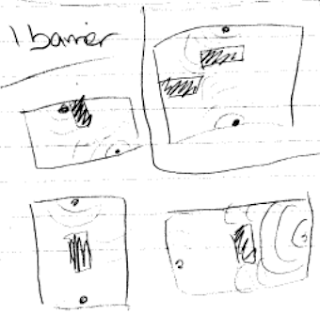I think that waves interact best without any barriers. I noticed that when our blocks of clay were absent, the waves were able to overlap and slow each other down. Barriers obstruct the movement of waves, and therefore prevents them from interacting. Without that obstruction, waves are free to interact without being hindered.
 |
| No Barriers |
2.) One Barrier:
It depends on where the barrier and the points of energy where the waves are formed are placed, but in most cases, the waves end up interacting all right. The farther the wave gets away from its energy source, the wider it becomes, so once it reaches the barrier, the wave is too wide to be completely stopped by it, and goes around the obstruction without much trouble. This is called diffraction, because it is bending and then broadening again after passing the barrier.
 |
| One Barrier |
3.) Two Barriers:
When you have both barriers protruding out from the sides of the plastic container, just leaving a small space for the waves to interact between them, the waves don't usually meet. They will spread out as far as the barriers allow them, but will leave the space between the two untouched. According to our observations, the water between the two obstructions hardly moves at all. Although they aren't able to go through/around the barriers, the waves do bounce back, and they cause standing waves, which look like they're staying still, when really both waves are moving in the opposite directions.
As you can see in each of the pictures on this blog post, they are parts of my notebook sketches of the different ways the waves interacted with the barriers.
 |
| Two Barriers |
No comments:
Post a Comment